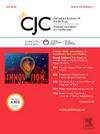心血管纤维化中的巨噬细胞:新型亚群、分子机制和治疗靶点。
IF 5.8
2区 医学
Q1 CARDIAC & CARDIOVASCULAR SYSTEMS
引用次数: 0
摘要
心血管纤维化是一种常见的病理过程,会导致各种心血管疾病的发生和发展。尽管人们普遍认为心血管纤维化是一个不可逆转的无情过程,但临床前模型和临床试验都证明,心血管纤维化是一个极其动态的过程。此外,作为先天性免疫系统的一部分,巨噬细胞是一种异型细胞,在组织再生和纤维化过程中起着关键作用。它们参与成纤维细胞的活化、细胞外基质的重塑和纤维化的消退。虽然我们在了解心血管纤维化中的巨噬细胞方面取得了一些进展,但从识别巨噬细胞到将其转化为有效的治疗方法之间仍存在差距。此外,传统的 M1/M2 范式面临许多挑战,因为它没有充分阐明巨噬细胞的多样性及其功能。探索基于巨噬细胞的新型疗法是心血管纤维化治疗的当务之急。单细胞技术有助于识别在稳态和病理条件下功能和分子特征不同的新型亚群。在这篇综述中,我们概述了巨噬细胞的发育起源及其功能;单细胞时代的最新技术发展。此外,我们还描述了新定义的巨噬细胞亚群的标志物和介质以及相关的分子机制,以阐明在心血管纤维化中靶向巨噬细胞的潜在方法。本文章由计算机程序翻译,如有差异,请以英文原文为准。

Macrophages in Cardiovascular Fibrosis: Novel Subpopulations, Molecular Mechanisms, and Therapeutic Targets
Cardiovascular fibrosis is a common pathological process that contributes to the development and progression of various cardiovascular diseases. Despite being widely believed to be an irreversible and relentless process, preclinical models and clinical trials have shown that cardiovascular fibrosis is an extremely dynamic process. Additionally, as part of the innate immune system, macrophages are heterogeneous cells that are pivotal in tissue regeneration and fibrosis. They participate in fibroblast activation, extracellular matrix remodelling, and the regression of fibrosis. Although we have made some advances in understanding macrophages in cardiovascular fibrosis, a gap still remains between their identification and conversion into effective treatments. Moreover, the traditional M1-M2 paradigm faces many challenges because it does not sufficiently clarify macrophage diversity and their functions. Exploring novel macrophage-based therapies is urgent for cardiovascular fibrosis treatment. Single-cell techniques have shed light on identifying novel subpopulations that differ in function and molecular signature under steady-state and pathological conditions. In this review, we outline the developmental origins of macrophages, which underlie their functions; and recent technology development in the single-cell era. In addition, we describe the markers and mediators of the newly defined macrophage subpopulations and the molecular mechanisms involved to elucidate potential approaches for targeting macrophages in cardiovascular fibrosis.
求助全文
通过发布文献求助,成功后即可免费获取论文全文。
去求助
来源期刊

Canadian Journal of Cardiology
医学-心血管系统
CiteScore
9.20
自引率
8.10%
发文量
546
审稿时长
32 days
期刊介绍:
The Canadian Journal of Cardiology (CJC) is the official journal of the Canadian Cardiovascular Society (CCS). The CJC is a vehicle for the international dissemination of new knowledge in cardiology and cardiovascular science, particularly serving as the major venue for Canadian cardiovascular medicine.
 求助内容:
求助内容: 应助结果提醒方式:
应助结果提醒方式:


